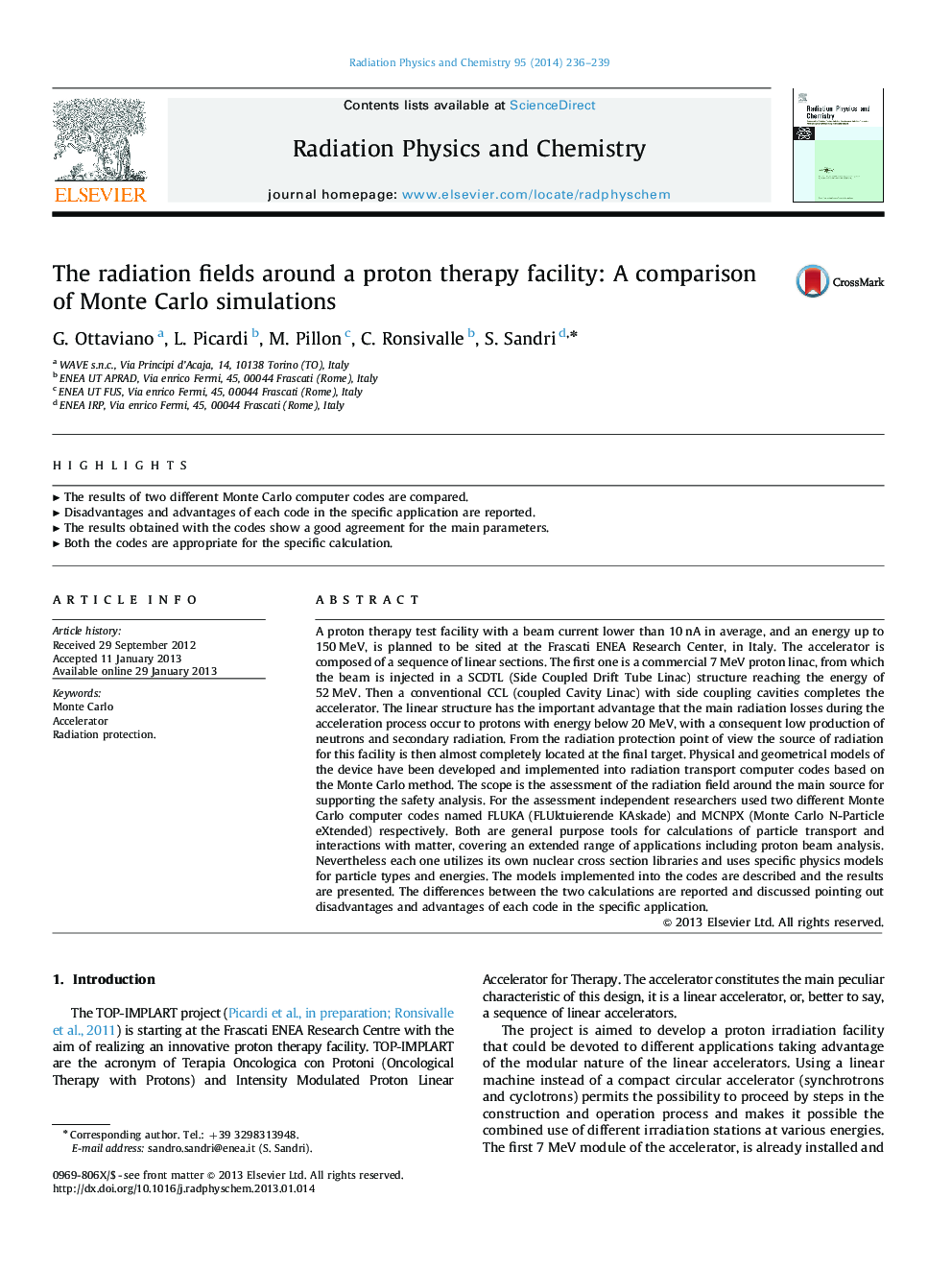| کد مقاله | کد نشریه | سال انتشار | مقاله انگلیسی | نسخه تمام متن |
|---|---|---|---|---|
| 1882446 | 1533529 | 2014 | 4 صفحه PDF | دانلود رایگان |
A proton therapy test facility with a beam current lower than 10 nA in average, and an energy up to 150 MeV, is planned to be sited at the Frascati ENEA Research Center, in Italy. The accelerator is composed of a sequence of linear sections. The first one is a commercial 7 MeV proton linac, from which the beam is injected in a SCDTL (Side Coupled Drift Tube Linac) structure reaching the energy of 52 MeV. Then a conventional CCL (coupled Cavity Linac) with side coupling cavities completes the accelerator. The linear structure has the important advantage that the main radiation losses during the acceleration process occur to protons with energy below 20 MeV, with a consequent low production of neutrons and secondary radiation. From the radiation protection point of view the source of radiation for this facility is then almost completely located at the final target. Physical and geometrical models of the device have been developed and implemented into radiation transport computer codes based on the Monte Carlo method. The scope is the assessment of the radiation field around the main source for supporting the safety analysis. For the assessment independent researchers used two different Monte Carlo computer codes named FLUKA (FLUktuierende KAskade) and MCNPX (Monte Carlo N-Particle eXtended) respectively. Both are general purpose tools for calculations of particle transport and interactions with matter, covering an extended range of applications including proton beam analysis. Nevertheless each one utilizes its own nuclear cross section libraries and uses specific physics models for particle types and energies. The models implemented into the codes are described and the results are presented. The differences between the two calculations are reported and discussed pointing out disadvantages and advantages of each code in the specific application.
► The results of two different Monte Carlo computer codes are compared.
► Disadvantages and advantages of each code in the specific application are reported.
► The results obtained with the codes show a good agreement for the main parameters.
► Both the codes are appropriate for the specific calculation.
Journal: Radiation Physics and Chemistry - Volume 95, February 2014, Pages 236–239
